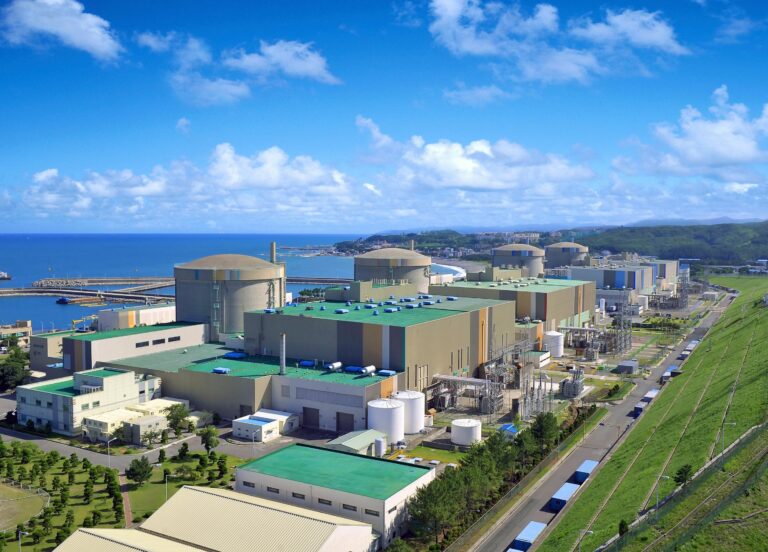South Korea and the United States have announced plans to strengthen their partnership in the field of nuclear energy, according to officials in Seoul. The move comes as both nations seek to enhance cooperation on advanced nuclear technologies to address energy security and climate goals. This expanded collaboration is expected to bolster joint research, development, and deployment efforts, reflecting a strategic alignment amid growing global interest in clean energy transitions.
South Korea and US Announce Enhanced Collaboration on Nuclear Energy Technology
South Korea and the United States have taken a significant step forward in their nuclear energy cooperation, focusing on advancing technology that promises to enhance energy security and environmental sustainability. This collaboration aims to drive innovation in small modular reactors (SMRs), next-generation reactor designs, and improved safety protocols. Both nations see this partnership as a strategic move to reduce reliance on fossil fuels and accelerate the global shift toward clean, reliable energy sources.
- Joint development: Emphasizing shared research initiatives and technology transfer.
- Regulatory harmonization: Aligning safety standards and licensing procedures to facilitate deployment.
- Supply chain cooperation: Strengthening materials and components production for the nuclear sector.
Officials from both countries have highlighted the economic opportunities and geopolitical benefits stemming from deeper cooperation. They plan to establish a bilateral task force to oversee project implementation and explore export potential for nuclear technology in third-party markets. The initiative also reflects a mutual commitment to non-proliferation and peaceful use of nuclear power.
| Focus Area | Objective | Expected Impact |
|---|---|---|
| Small Modular Reactors | Innovative reactor designs | Increased flexibility and safety |
| Safety Standards | Unified regulatory measures | Faster approval and deployment |
| Export Markets | Market expansion initiatives | Economic growth and job creation |
Strategic Objectives and Economic Implications of the Bilateral Nuclear Partnership
The renewed collaboration between South Korea and the United States in nuclear energy strategically positions both nations at the forefront of clean energy innovation and geopolitical stability. By deepening their alliance, the countries aim to not only exchange advanced nuclear technologies but also jointly develop next-generation reactors that promise enhanced safety, efficiency, and reduced waste. This partnership is expected to serve as a counterbalance in a volatile regional environment, reinforcing diplomatic ties while supporting global non-proliferation goals.
Economically, the bilateral partnership presents multiple growth avenues, including:
- Job creation: Expansion in nuclear infrastructure projects is set to generate high-skilled employment across engineering, manufacturing, and research sectors in both countries.
- Investment stimulation: Joint ventures and co-financing mechanisms will attract private capital, boosting economic activity in energy and technology markets.
- Export potential: Collaborative development of advanced reactors enhances export prospects to third-party countries seeking reliable and clean nuclear solutions.
| Key Focus Area | Short-Term Benefits | Long-Term Impact |
|---|---|---|
| Technology Sharing | Accelerated innovation pipelines | Establishment of global nuclear leadership |
| Energy Security | Reduced fossil fuel dependency | Stable & sustainable power supply |
| Economic Growth | Increased manufacturing output | Enhanced competitiveness in global markets |
Addressing Safety and Regulatory Challenges in Joint Nuclear Projects
Collaborative nuclear projects between South Korea and the United States are navigating a landscape marked by stringent safety protocols and evolving regulatory frameworks. Both nations are committing to harmonizing their standards to ensure the highest levels of operational safety and public trust. This includes synchronizing licensing processes, enhancing emergency preparedness, and advancing technological safeguards that minimize risks throughout the nuclear fuel cycle.
Key areas of focus include:
- Joint Safety Assessments: Regular cross-national reviews to identify and mitigate potential operational hazards.
- Regulatory Alignment: Streamlining approval procedures to expedite project timelines while upholding rigorous safety requirements.
- Training & Workforce Development: Shared programs to cultivate expertise in nuclear safety and compliance.
Below is a comparative overview of safety priorities agreed upon by Seoul and Washington in their nuclear cooperation:
| Aspect | South Korea Focus | U.S. Focus |
|---|---|---|
| Reactor Safety | Advanced passive safety systems | Robust risk assessment models |
| Waste Management | Long-term storage solutions | Recycling and disposal innovations |
| Emergency Preparedness | Community evacuation protocols | Real-time monitoring and response |
Policy Recommendations for Strengthening Nuclear Energy Cooperation and Innovation
To bolster the strategic alliance between South Korea and the United States in nuclear energy, policymakers should prioritize a comprehensive framework that encourages technological collaboration and streamlines regulatory processes. This includes the establishment of joint research hubs focused on next-generation reactor designs, advanced fuel cycles, and enhanced safety protocols. Governments should also foster knowledge-sharing platforms that equip industry leaders and academic institutions to jointly tackle challenges related to nuclear waste management and cybersecurity. Enhanced collaboration in these areas can accelerate innovation while underpinning sustainable and safe energy production.
Additionally, concerted efforts to harmonize export controls and intellectual property rights will pave the way for smoother bilateral trade and investment flows in the nuclear sector. Incentivizing private sector participation through tax relief, grants, and public-private partnerships can stimulate competitive domestic supply chains for nuclear components and services. The table below outlines key focus areas and corresponding policy actions that could serve as a blueprint for deepening nuclear cooperation:
| Focus Area | Policy Action | Expected Outcome |
|---|---|---|
| Joint R&D Initiatives | Establish bilateral research centers | Accelerated innovation in reactor tech |
| Regulatory Alignment | Unified safety and licensing standards | Reduced project delays and costs |
| Export Control Harmonization | Streamline approval procedures | Expanded market access for exports |
| Incentives for Private Sector | Tax credits, grants, and partnerships | Increased investment and innovation |
Wrapping Up
As South Korea and the United States move forward with plans to deepen their nuclear energy partnership, both nations underscore the strategic and environmental significance of their collaboration. This strengthened alliance aims to enhance energy security, promote advanced nuclear technologies, and support global efforts toward carbon reduction. Observers will be watching closely as the two countries implement their joint initiatives, with the potential to shape the future landscape of nuclear energy in the Indo-Pacific region and beyond.




